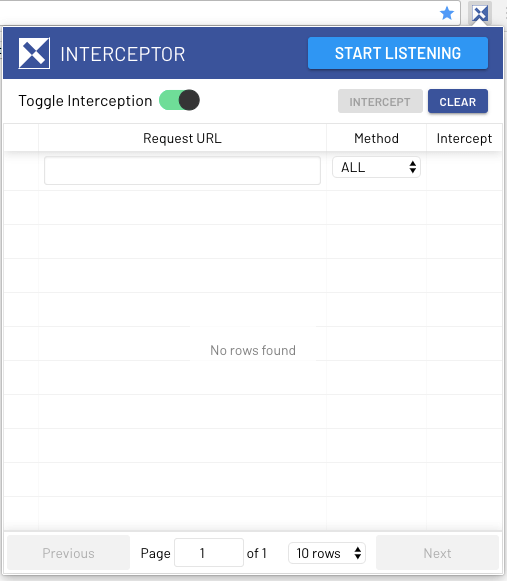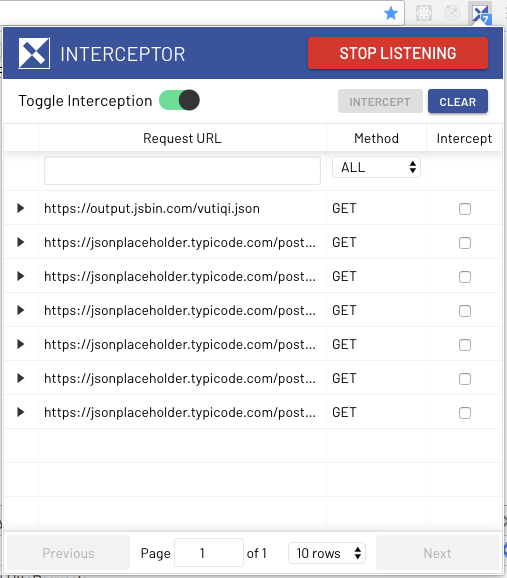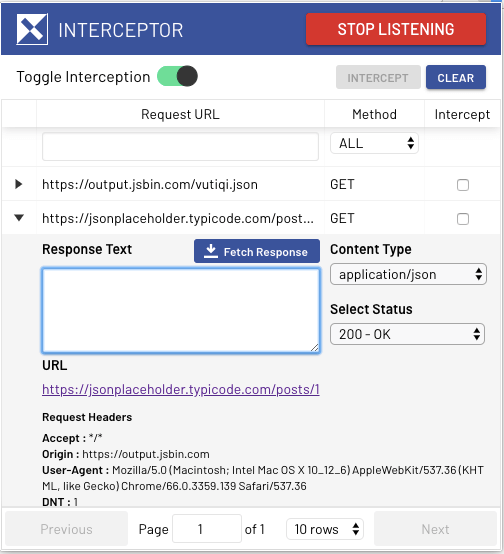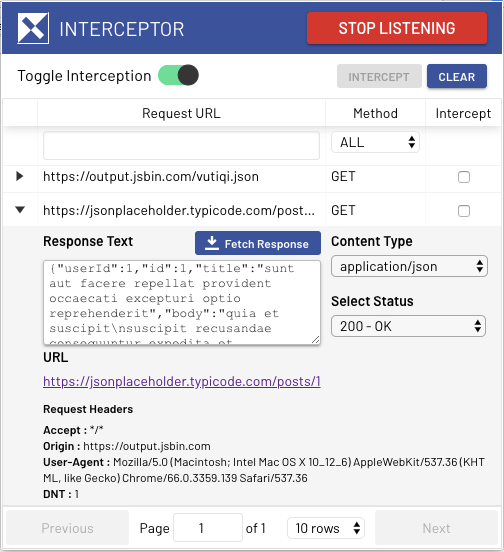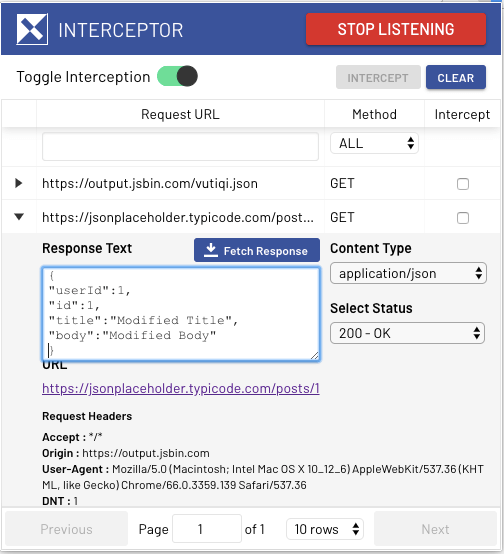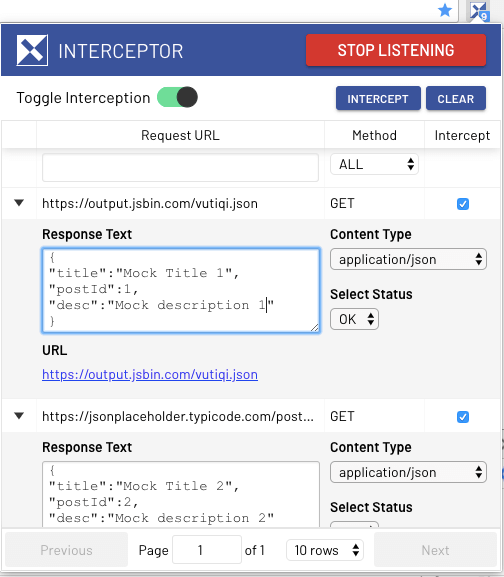A browser extension that mocks AJAX request at the browser level so you can run front ends without really starting a backend server.
In Chrome
$ yarn install
$ yarn run watch
# Install "./dist" directory as "unpacked chrome extension" (google it!)
In Firefox
$ yarn install
$ yarn run watch
$ yarn global add web-ext
$ web-ext run -s dist -f "/usr/bin/firefox"
$ yarn run build
$ AMO_API_KEY=<amo api key> AMO_API_SECRET=<amo api secret> NEW_VERSION=0.3.2 yarn run release
Once you open the extension popup, it shows a UI as seen below. By default, Intercept Mode is ON.
Once you start listening, it shows the count of total AJAX requests in a small badge and list of incoming XHR requests
in the popup like this:
Request headers for listened requests are listed below the response form as shown in the screenshot.
Many a times, before defining you mock response text, you would want to look at the response data returned by the server when the request is made. On clicking Fetch Response button, the textarea gets filled with the response data from the real server as shown below. However, You can completely skip this step and move on to typing out mock response text.
You can click the small arrow beside the URL, which shows a form in which you can specify a response to mock, when the same request is encountered next. You also need to specify the Content-Type header field and status code for the mock response through the dropdown available as shown below.
Once the above fields are filled and checkbox is checked, click the INTERCEPT button. If the interception is successfull, it shows a success message as below:
You can intercept/mock multiple calls by checking as many checkboxes as you want
Henceforth the same AJAX request is made by the browser, the browser is given a fake/mock response instead of the real one.
You can also stop listening for AJAX calls by clicking the STOP LISTENING button. Requests made henceforth won't be listed on UI.
The toggle switch is used to disable INTERCEPTOR. If the toggle is switched to OFF state, it displays a message saying Interception Disabled as below.
In the disabled state, the extension won't mock any previously intercepted calls. Instead all XHR's are routed to the server.
The extension's icon beside the url address bar turns red for that particular tab as in screenshot above.
To mock the calls again, just toggle the switch to ON state, check the requests that are to be mocked and click INTERCEPT button.
This blogpost makes things much more clear.
A user should be able to click on the extension button and see a popup with a list of all AJAX requests.- A user should be able to "watch" ajax requests using a URL pattern.
- If watched requests are in pre-flight, block everything and ask the user how to handle it.
The user may choose to let the request pass through or fill in mock response using a form.- Persist settings for each URL in localStorage.
Mocked requests should hit a sinon fakeServer.User should be able to disable/enable mocking for a page without clearing persisted settings for the URL.
Icons for this projects are used from Font Awesome
- Play Circle and Stop Circle icons are used from Font Awesome
MIT




